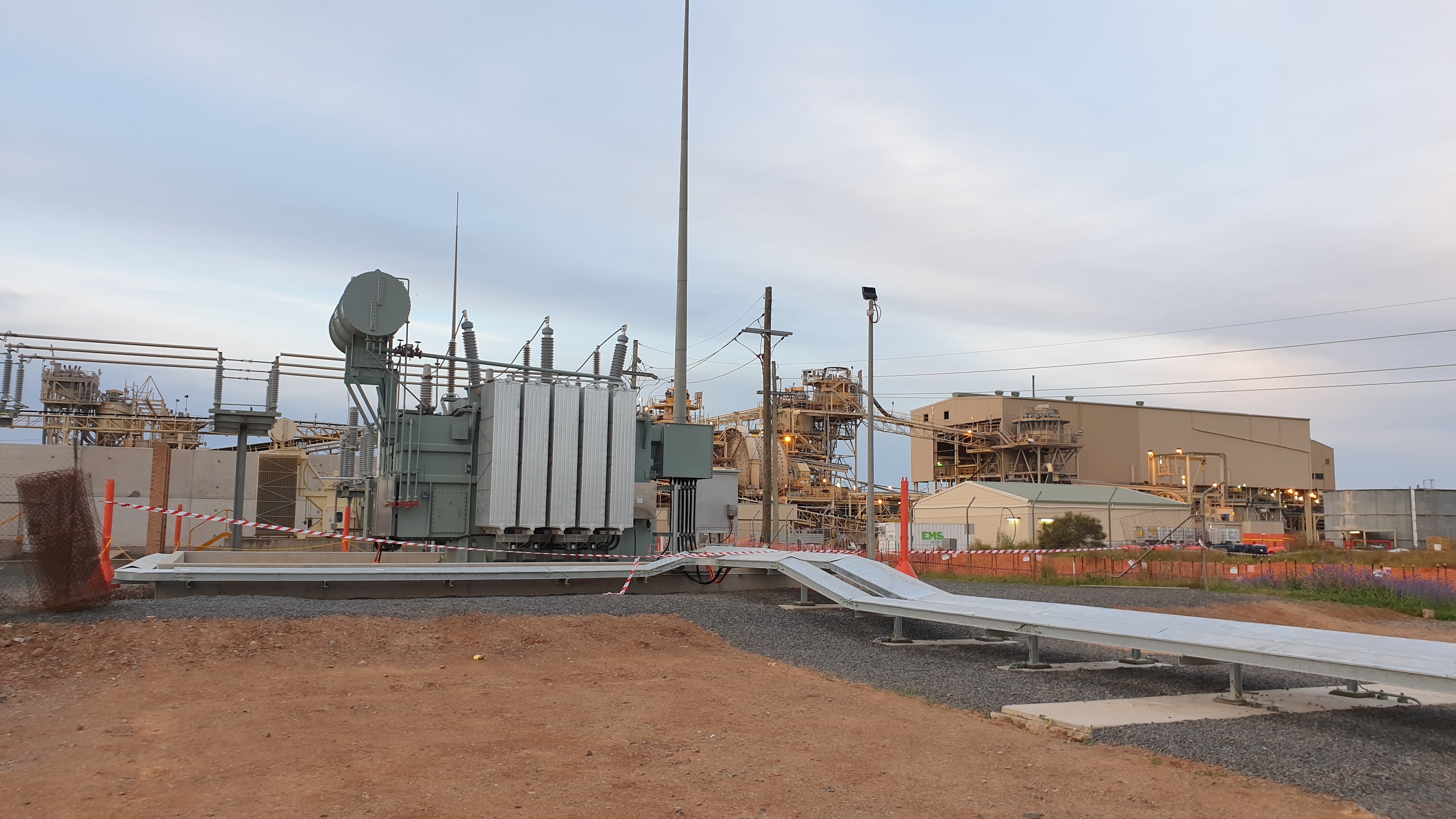
Earthing & Lightning Protection Design
PCE specializes in the modelling, design, testing and commissioning of earthing and lightning protection systems for a wide range of industries and applications. Our team of experienced electrical engineers have proven knowledge and expertise in earthing to provide comprehensive solutions that meet the specific needs of each project.
Design and consultancy
Our engineers are equipped with the latest modelling technology and knowledge to provide you with a tailored design solution for your earthing and lightning protection needs. We work closely with you to understand your specific requirements and develop a design that meets international and Australian standards so increasing site safety and mitigating risk.
Our design and consulting services include:
Earthing
- High voltage earthing system modelling, design, and specification.
- Design and specification of earthing systems for low voltage electrical installations
- Design and specification of earthing systems for telecommunications installations
- Assessment of pipeline electrical hazards and mitigation measure design
- Audits and review of existing installations
- Mitigation strategies for management of complex earthing installations with high SLG fault levels
- Compliance with relevant standards and regulations
- Incident investigation
Lightning Protection
- Detailed risk assessment and specification of required lightning protection control measures as per the guidance of AS 1768:2021
- Lightning protection system design for all structure types, including detailed design of:
- Direct strike protection
- Transient voltage surge protection
- Equipotential bonding
- Lightning protection earthing / grounding systems.
- Insulation coordination studies
- Compliance with relevant standards and regulations
- Incident investigation
- Development of lightning risk management plans and site policy for reduction of risk for personnel
Testing and inspection
Our comprehensive testing and inspection services ensure that your earthing system and/or lightning protection system is performing as it should.
Our testing capabilities include:
- Soil resistivity testing using the Wenner Method
- Low current off-frequency injection testing
- Fall of potential testing
- Current distribution in cable screens and overhead earth wires
- Earth continuity testing
Maintenance and upgrades
Regular maintenance and baseline earthing testing are essential to maintain original intended design risk levels throughout the lifecycle of installed earthing and lightning protection systems. Our team have proven capability in establishing practical and effecting maintenance regimes for your sites earthing and lightning protection infrastructure.
We have a proven track record of successfully delivering projects on time and within budget, and we pride ourselves on our attention to detail and commitment to safety. We provide our clients with the highest level of service and support throughout the entire project lifecycle.
View our Earthing & Lightning Protection Capability Statement
Frequently Asked Questions
What happens if an earthing system is inadequate?
An inadequate earthing system can lead to serious safety and operational issues, including:
- Electric shock hazards - fault current may not return safely to earth, creating dangerous touch and step voltages.
- Equipment damage - poor fault clearance can result in prolonged overvoltages, insulation breakdown, or arcing.
- Protection maloperation - circuit breakers and relays may fail to trip within required times if the earth fault path has excessive impedance.
- Communication interference - unstable reference potentials cause noise and data errors in sensitive control or instrumentation systems.
- Fire risk - sustained fault energy or arcing at high resistance points can ignite combustible materials.
In short, an inadequate earthing system compromises personnel safety, asset integrity, and network reliability.
Do you require specialised earthing solutions for hazardous areas?
Yes. Hazardous areas (Zone 0, 1, 2 for gases and Zone 20, 21, 22 for dusts) require earthing systems designed to prevent ignition under fault or static conditions. Special considerations include:
- Equipotential bonding of all conductive parts to eliminate spark discharges.
- Low-resistance connections to ensure any fault current dissipates safely.
- Use of intrinsically safe earthing networks - avoiding loops that could induce currents in instrumentation circuits.
- Static-dissipative earthing for tanks, pipelines, and truck loading/unloading areas.
- Material selection - corrosion-resistant conductors and non-sparking terminations.
Design must comply with AS/NZS 60079.14, AS/NZS 3000, and AS/NZS 1020, often validated through a hazardous-area verification dossier.
How do you determine if a site needs lightning protection?
The need for a Lightning Protection System (LPS) is determined through a formal risk assessment in accordance with AS 1768:2021.
The process considers:
- Structure parameters: height, footprint, construction materials, contents.
- Occupancy: people density and exposure.
- Service continuity: criticality of operations, data systems, or process interruption risk.
- Environmental factors: location lightning density (Ng), soil resistivity, altitude, and terrain.
- Consequence of damage: fire, explosion, or environmental harm.
If the calculated risk level exceeds the tolerable limit, lightning protection (air terminals, down conductors, earthing, surge protection) may be required to reduce the risk to an acceptable level.
How is lightning protection tested?
Lightning Protection Systems are tested and maintained per AS 1768:2021, Section 5.
Key tests include:
- Visual inspection - check physical condition, corrosion, continuity, and mechanical integrity of air terminals, down conductors, and bonds.
- Continuity and resistance testing - verify electrical continuity between all metallic components and earth.
- Earth resistance testing - measure each down-conductor electrode and overall LPS resistance (typically target ≤ 10 Ω or per design).
- Surge protection verification - inspect SPD ratings, installation, and test replaceable cartridges.
PCE recommends the following test intervals in line with the best practices:
- At the time of commissioning.
- After any modification or major storm damage.
- Routine inspection every 12 months (industrial) or 24 months (low-risk commercial).

